My father, Harry Young Jr., wasn’t a shy fellow. If he was going to do something, he’d do it out in the open and let the chips fall where they may.
That’s why he planted what’s believed to be the first commercial no-till field in the U.S. right on the highway, not back in the woods. And there’s a historical marker here in Herndon, Ky., to commemorate that original 7/10 of an acre, planted in 1962. The first crop was corn, and that field has been in no-till ever since.
“Back in 1962 when my dad planted that first no-till field, he was exemplifying two traits Thomas Edison said are necessary to be an inventor. That is, to have a good imagination and a pile of junk…”
Dad worked with Shirley Phillips, a University of Kentucky agronomist, to try and perfect the system over the years. While Dad passed away in 1988, the fifth and sixth generations of his family — myself and my son, Alexander — continue to no-till the farm to this day.
This spring represents 60 years since Dad planted the first no-till crop in that field. When he first started no-tilling, my 11-year-old mind was on other things, but I remember a lot of activity over the next few years. People would come by to look at the field, and there were tours and a lot of phone calls. Curiosity ran high.
How It Began
It all started with a neighbor and county agent, Reeves Davie, who urged Dad to join him and a small group of others to see a tiny no-till plot at a field day in Dixon Springs, Ill., put together by University of Illinois agronomist George McKibben.
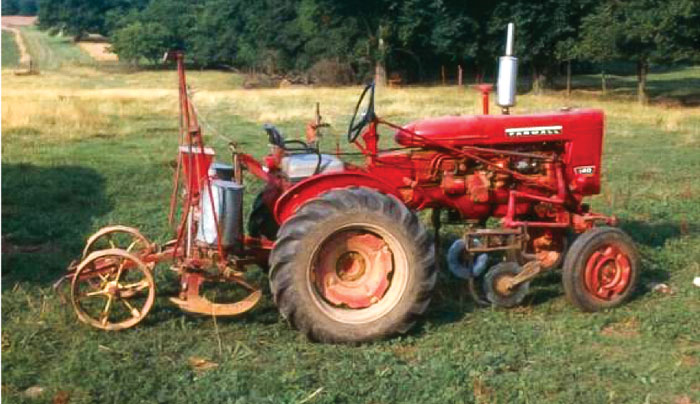
STORIES TO CARRY. Frank Lessiter visited the Young Farm for the first time in 1972, the same year that he wrote the inaugural edition of No-Till Farmer. The first corn crop was planted with a modified 2-row planter once pulled by mules.
Dad brought the idea home and thought he could do it. He never envisioned the extent to which no-till would catch on.
There were a lot of equipment changes in the first few years. We went from flat chains to a bicycle chain, from small seed boxes to larger ones, and from single coulters to double coulters. I remember that one of the front coulters was used for placing in-row insecticides.
Herbicides were definitely a problem in the early days of no-till. Phillips worked with Dad a lot on that aspect. I remember they once used at least 5 pounds per acre of atrazine. That’s a lot of atrazine, but before the days of GMO and our modern herbicides, there wasn’t any other choice.
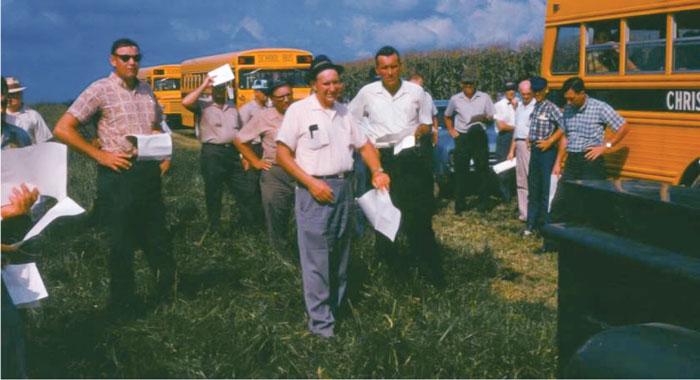
DRAWING A CROWD. During the first 22 years of using no-tillage, more than 11,000 converged on tiny Herndon, Ky., to see how the practice was being done.
Today, the vast majority of our area is no-till, and we’ve even had some local innovators that helped move the practice along.
Howard Martin is our neighbor in the next county over. His row cleaners added a lot of ability to no-till in different soils and conditions. We use them on all our planters. Along with Keeton Seed Firmers, also invented in our area by Eugene Keeton, row cleaners are probably the greatest advancements in no-till technology I can think of.
Continuing The Tradition
I was thankful I made the switch from history back to agriculture and was able to tell my grandfather before he passed that I was coming back to farm our family’s land. Now my son, Alexander, farms with me and is carrying on the family tradition.
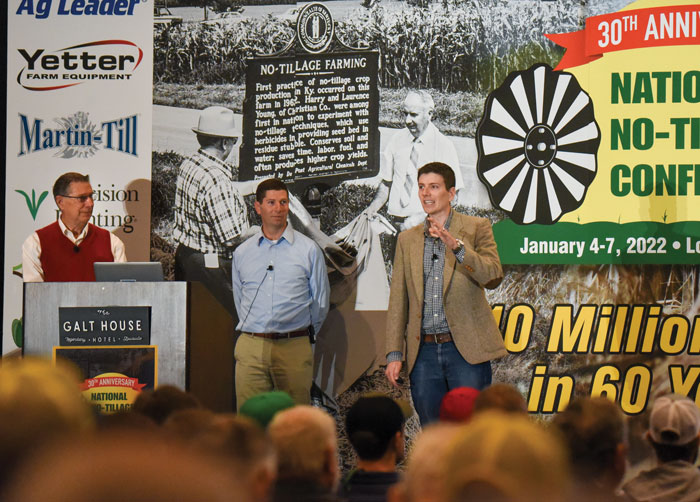
NO-TILL’S FOUNDING FAMILY. From left are Harry Young Jr.’s son, John, and grandsons, Alexander and Jeffrey. The trio kicked off the 30th Annual National No-Tillage Conference in Louisville in January 2022 with a special keynote, “The Future of No-Tilling: Business & Profit.” Above Alexander’s shoulder is the historical marker commemorating no-till’s first commercial plot on 0.7 acre. Today, the Young family farms 4,500 acres, including the same small no-till plot abutting the highway.
When I first came back to the farm, I admit I was skeptical about no-till, but skepticism is part of my nature. Any system needs to prove itself and we need to be flexible as farmers.
The “four Ps” for farmers should be Profit, Production, Progeny and Posterity. To have the last three, you must have profit, and no-till proved to provide it.
Once I got over my skepticism, I learned from my dad to pay close attention to the details. He believed one small change could make a huge difference in an experiment, and he was right.
“All the forces in the world are not so powerful as an idea whose time has come,” wrote French author Victor Hugo. In the mid-20th century, no-tillage was such an idea.
– John Young, Special to No-Till Farmer
The 2024 No-Till History Series is supported by Calmer Corn Heads. For more historical content, including video and multimedia, visit No-TillFarmer.com/HistorySeries.

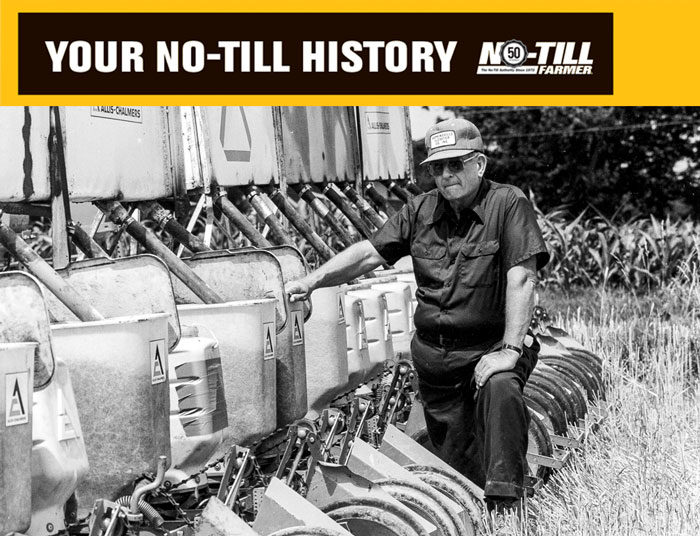
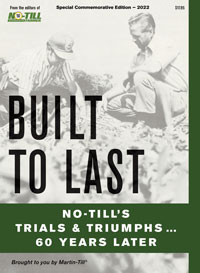
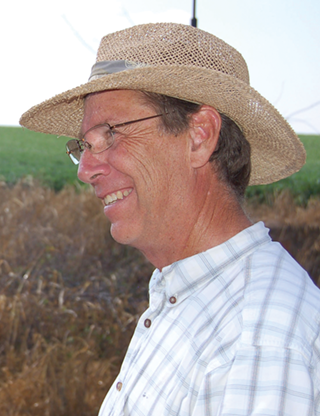





Post a comment
Report Abusive Comment